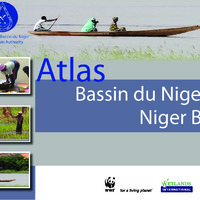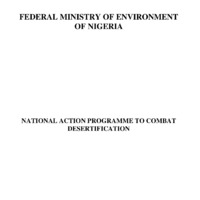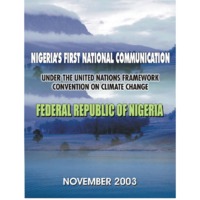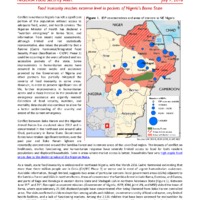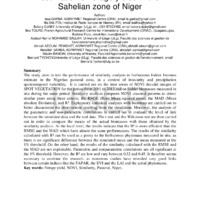Recherche
5 items
Atlas du bassin du niger
Cet ouvrage est consacré au Niger, le fleuve des fleuves. Ce cours d’eau traverse quatre pays mais son bassin draine neuf (9) Etats d’Afrique de l’Ouest représentant un kaléidoscope de cultures et de paysages. Son nom original, «egerou n-igereou», signifie «fleuve des fleuves». Il lui a été donné par les Touaregs, qui voulurent ainsi souligner le caractère exceptionnel qu’avait pour eux ce cours d’eau. Le fleuve Niger est le 4ème bassin hydrographique d’Afrique avec ses 4.200 km de long et dont le bassin couvre environ 2,1 millions de km2 de superficie totale pour 1,5 millions de km2 de bassin actif. La gestion intégrée de ce potentiel hydrique et de ses écosystèmes associés est un enjeu majeur pour les Etats membres de l’Autorité du Bassin du Niger (ABN) et ses partenaires comme l’attestent les différentes thématiques abordées dans cet ouvrage. Nous sommes aujourd’hui tous conscients des priorités de développement du bassin et j’en suis convaincu que cet ouvrage contribuera à faire mieux connaître le bassin du Niger dans toute sa diversité aux plans tant national qu’international, et servira d’inspiration pour atteindre les objectifs de la Vision partagée. Enfin, cette publication est le témoignage d’une collaboration fructueuse entre l’ABN et deux ONG Internationales partenaires, le Fonds Mondial pour la Nature (WWF) à travers son Programme Eaux douces pour l’Afrique de l’Ouest et Wetlands International.
CNUCC NAPCD nigeria
The severity of desertification in the drylands of the world prompted the United Nations Organization to adopt a Convention to Combat Desertification (CCD), in 1994 for which National Action Programme (NAP) which Nigeria ratified in 1997. As a principal tool for the implementation of the Convention, parties are expected to prepare and implement NAP. Nigeria is a large country with a substantial part of its area extending into the Sudano-sahelian belt, which, together with the neigbouring northern Guinea savanna, constitutes the drylands of the country. With an estimated population of 113 million, human pressure on the land particularly in the marginal areas has continued to take its toll on the environment, resulting in desertification. Desertification is made very severe in the drylands of the country by increasing human attempts to exploit the resources of the ecological zone in the face of persistent drought. Before now, Nigeria has been tackling the problem of desertification the best way it could, but with little success. It is now obvious that the menace should be addressed in a holistic manner in order to ensure that the drylands of the country continue to support human and natural resources. This National Action Programme (NAP) spells out critical activities to be taken in a holistic manner to tackle the menace of desertification of the country. To facilitate a clear understanding of the NAP, an outline of the country’s environment is given, followed by a description of the extent and severity of desertification in the area. Also highlighted are the earlier efforts made to combat the menace, and the lesson learnt from such efforts. The NAP itself presents, guiding principles, issues, strategies and priority projects.
CNUCC Nigeria's initial national communication
Nigeria with a total area of 923,800 sq km occupies about 14& of land area in West Africa. The country lies between 4oN and 14oN, and between 3oE and 15oE. It is bordered respectively in the north, east, and west by Niger, the Cameroon, and Benin Republic, while the Gulf of Guinea, an arm of the Atlantic Ocean, forms the southern border. Most of Nigeria is covered with Pre- Cambrian rocks, but there are also metamorphic and sedimentary rocks of Eocene times as well as volcanic rocks. In general, three types of geologic structures exist in Nigeria, namely, areas of uplift, basins of sedimentation, and isolated volcanic areas. The areas of uplift are made up of the oldest rocks in Nigeria - the basement complex rocks.The basins of sedimentation are the down-warped areas, which were drowned by the sea at different times and in which sediments eroded from the areas of uplift were laid down.
Nigeria food security alert 7/7/2016
Food insecurity reaches extreme level in pockets of Nigeria’s Borno State
Performance of similarity analysis in the estimation of forage yields in the Sahelian zone of Niger
The study aims to test the performance of similarity analysis in herbaceous fodder biomass estimate in the Nigerian pastoral zone, in a context of insecurity and precipitation spatiotemporal variability.
